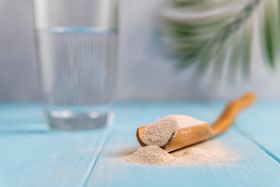Laser Treatment and More for Nail Fungus
Published May 1, 2022.

Nail fungus, also known as onychomycosis, is an infection of the toenail caused by fungi such as dermatophytes, yeasts, and molds. The nail may become discolored, chalky, crumbly, brittle, and/or thick. In some cases, there may also be a foul smell (1).
Most cases of nail fungus can be treated with simple home remedies, while more severe cases may require oral or topical antifungal medicines. However, these treatments take time and may not be 100% effective.
Laser treatment is an effective and convenient method for treating nail fungus and preventing further infections. Read on to learn more.
What Is Laser Treatment for Nail Fungus?
Laser treatment is getting quite popular as a treatment for eliminating nail fungus as it gives instant results. Home remedies and topical treatments for nail fungus require a long duration of treatment. With laser treatment, the fungus clears completely within days.
How Does It Work?
The laser is precisely directed at the infested area, killing the fungus without harming the surrounding nail tissue. Lasers produce coherent light energy of a specific wavelength that is projected into the nail tissue with the right strength. This produces heat and destroys the fungus for good. Other tissue surrounding the infected tissue remains unharmed.
Unlike topical treatments, the laser can penetrate through the toenail to reach the fungus. Generally, it takes just 10-20 minutes.
How Effective Is It?
Studies show that laser treatments are one of the most effective methods of treating toenail fungus. The success rate is nearly 80% or greater, which is much more than other treatments (2).
How Much Does It Cost?
The cost of laser therapy varies from $500-$1200, depending on the severity of the infection and the number of nails involved. Most of the time, two sessions with your podiatrist should be enough.
Preparing for Laser Treatment for Nail Fungus
Before laser treatment for nail fungus, you should take the following actions (3):
- Cleanse your nail Remove your nail polish and take out artificial nails. Toenails should be clipped straight across.
- Pack clean socks Carry a pair of clean, cotton, white socks and sanitized shoes with you to the appointment to wear afterward.
- Clean your house Vacuum your house floor and change your towels and bed linen after washing them in hot water. Thoroughly clean your shower and bathroom floor with bleach-based bathroom cleaner to make sure there are no signs of fungus.
- Sanitize your clippers and files
- Wear shoes that breathe Flip flops or similar will give the nail time to heal.
Alternative Treatment for Nail Fungus
There are many natural remedies for nail fungus. Try out these alternative treatments for nail fungus if the infection is mild.
- Epsom salt foot soak
- Tea tree oil
- Iodine
- Hydrogen peroxide
- Snakeroot extract
- Oregano oil
- Ozonated oil
- Olive leaf extract
- Vicks vaporub
One of the most effective treatments for toenail fungus is Fungix anti-fungal formula, a non-prescription nail fungus treatment that comes with an enclosed brush to apply the cream. It has an advanced formula with 25% undecylenic acid and many potent herbs.
Laser treatment is effective in eliminating nail fungus in case other remedies are not working, but it depends on the severity of the infection.
Dangers of Leaving Nail Fungus Untreated
As per the American Podiatric Medical Association (4), an untreated toenail can become thick and deformed, as well as spread and cause difficulty in walking, pain, and swelling. It can even spread to other areas of your body and cause jock's itch and fingernail fungus.
In severe cases, untreated nail fungus can cause cellulitis, characterized by the skin around the nails becoming tender, red, and swollen. Nail beds can get infected and even seep into the bloodstream, causing further health complications that may become life-threatening. As such, it's best to get it treated at the earliest possible instance rather than hoping it will go away on its own.







